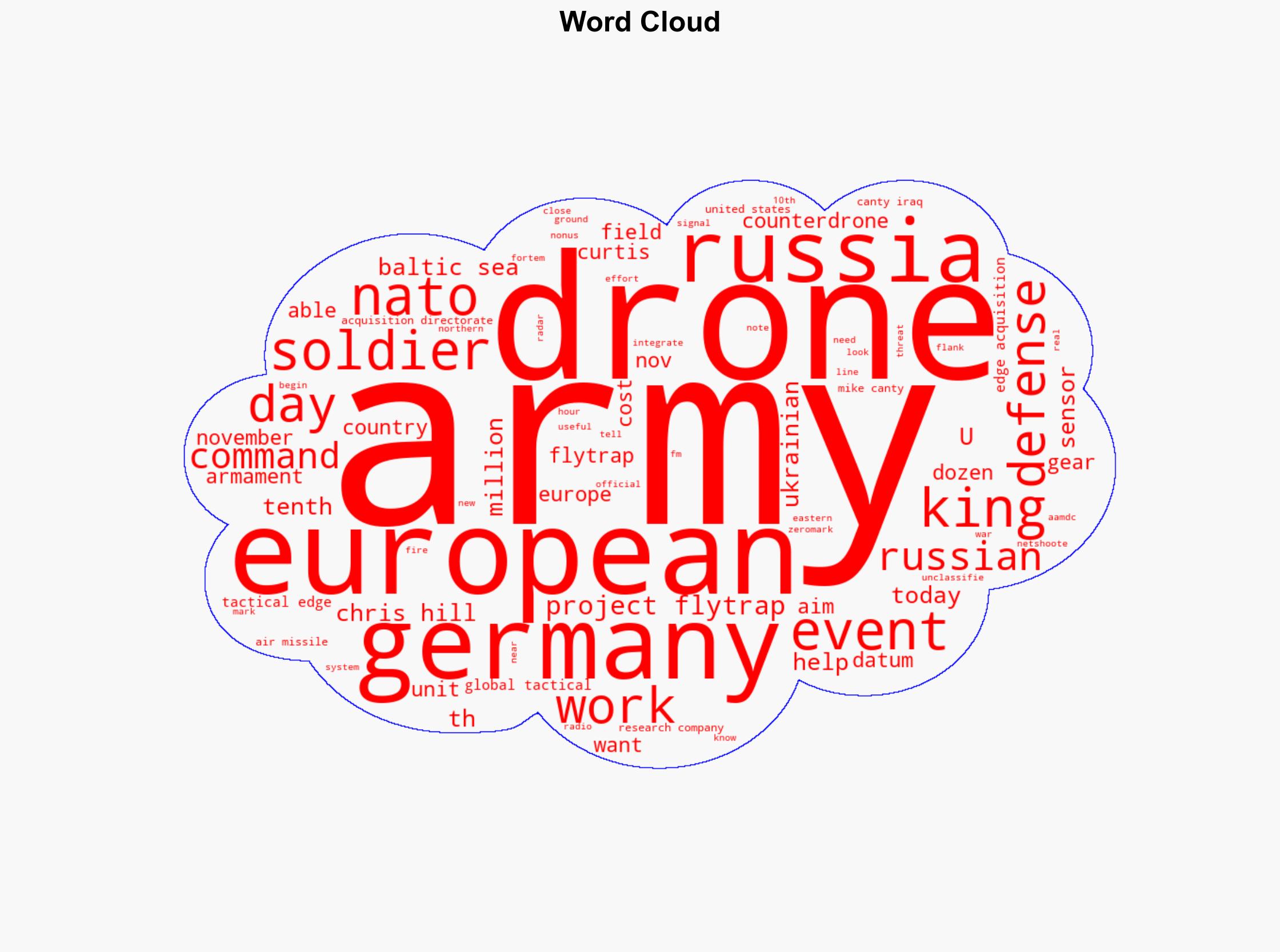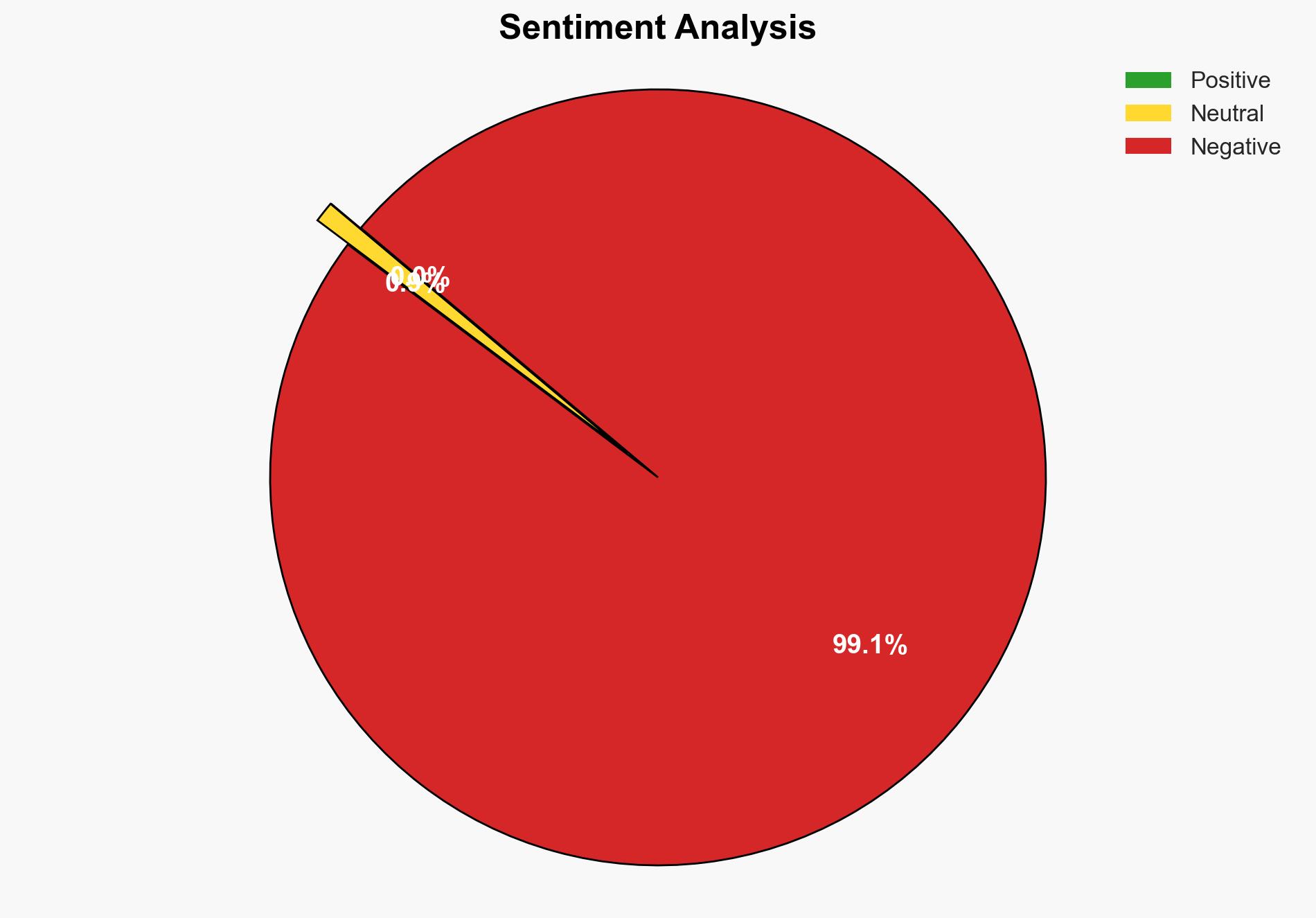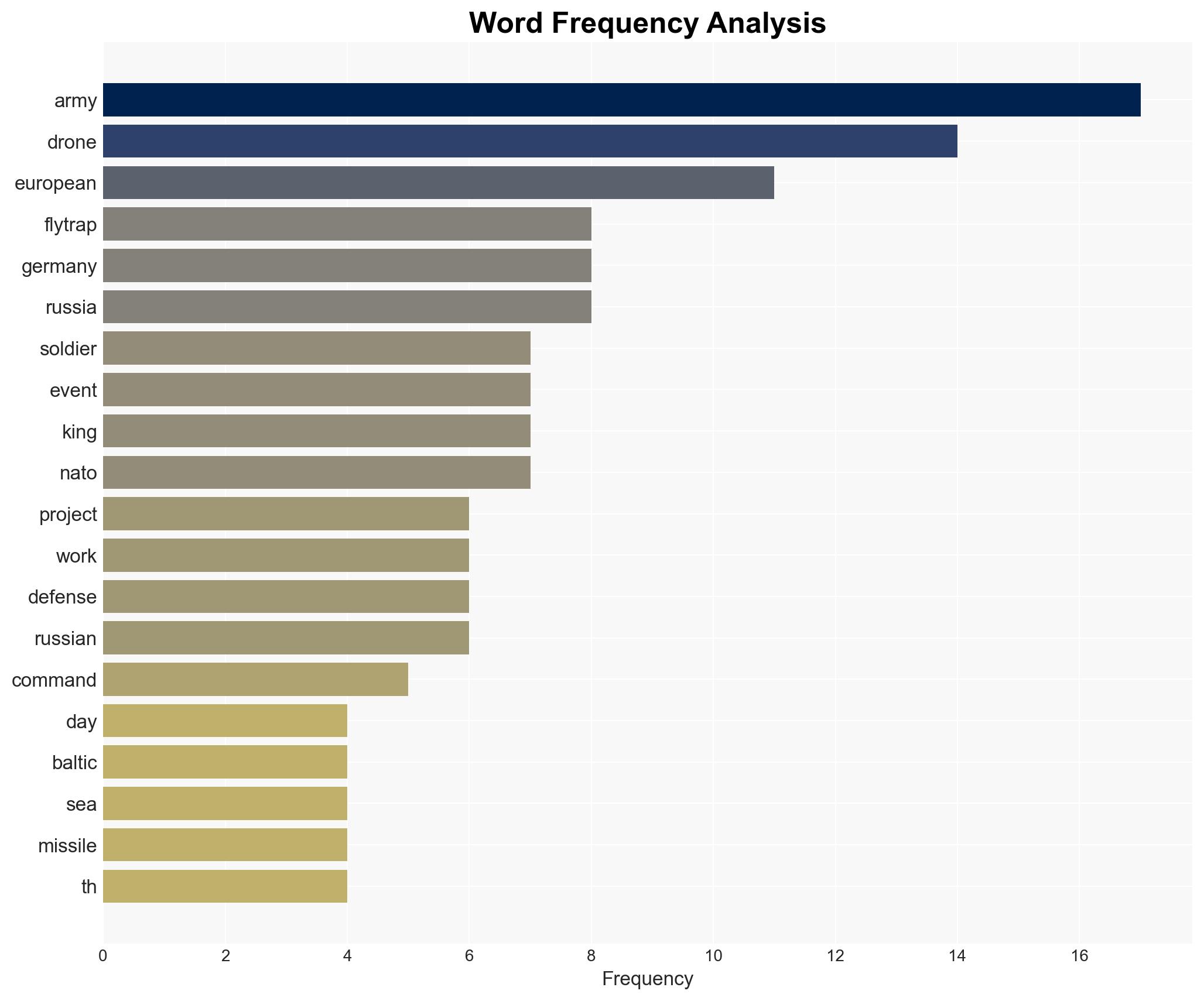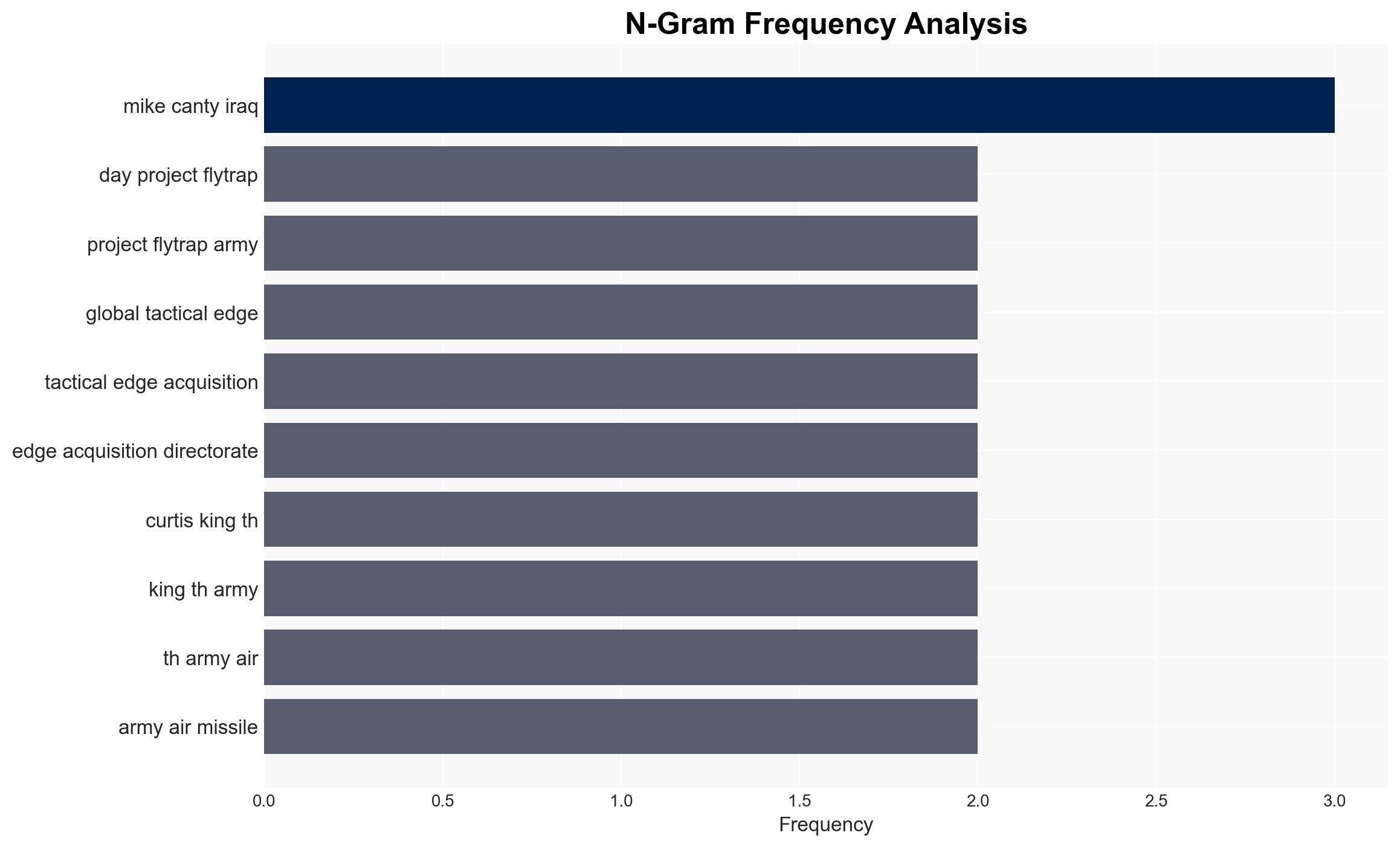Counter-drone warfare at scale Army demo shows its getting closer
Published on: 2025-11-25
AI-powered OSINT brief from verified open sources. Automated NLP signal extraction with human verification. See our Methodology and Why WorldWideWatchers.
Intelligence Report: Counter-Drone Warfare at Scale
1. BLUF (Bottom Line Up Front)
The strategic judgment is that the U.S. Army’s Project Flytrap is a significant step towards enhancing counter-drone capabilities, particularly in the context of NATO’s eastern flank defense against Russian drone threats. The most supported hypothesis is that this initiative will lead to a more integrated and effective counter-drone strategy within NATO. Confidence level: Moderate. Recommended action: Accelerate integration of these technologies into NATO’s defense framework and conduct joint exercises to refine tactics and interoperability.
2. Competing Hypotheses
Hypothesis 1: Project Flytrap will significantly enhance NATO’s counter-drone capabilities, providing a robust defense against Russian drone incursions. This is supported by the integration of advanced sensor data and real-time feedback mechanisms demonstrated during the event.
Hypothesis 2: The project may face challenges in operational deployment and integration within NATO due to technological, logistical, or political barriers, limiting its effectiveness. This hypothesis considers potential delays in procurement and interoperability issues among NATO allies.
The first hypothesis is more likely, given the successful demonstration of technology and the strategic importance placed on counter-drone capabilities by NATO members. However, the second hypothesis cannot be dismissed due to historical challenges in multinational defense integration.
3. Key Assumptions and Red Flags
Assumptions: It is assumed that the technology demonstrated can be scaled and integrated across NATO forces without significant delays. Additionally, it assumes that NATO members will prioritize funding and resource allocation for these capabilities.
Red Flags: Potential over-reliance on unproven technology, underestimation of adversary countermeasures, and possible political friction within NATO regarding technology sharing and deployment.
4. Implications and Strategic Risks
The successful deployment of Project Flytrap could deter Russian drone operations, reducing the threat to NATO’s eastern flank. However, failure to integrate these capabilities could leave vulnerabilities exposed. There is also a risk of escalation if Russia perceives these developments as a direct threat, potentially leading to increased cyber or informational warfare against NATO members.
5. Recommendations and Outlook
- Conduct joint NATO exercises to test and refine counter-drone tactics and interoperability.
- Ensure robust cybersecurity measures are in place to protect counter-drone systems from adversary interference.
- Engage in diplomatic efforts to communicate the defensive nature of these capabilities to reduce escalation risks.
- Best-case scenario: Successful integration and deployment lead to a strengthened NATO defense posture.
- Worst-case scenario: Technological or political barriers prevent effective deployment, leaving vulnerabilities.
- Most-likely scenario: Gradual integration with some initial challenges, leading to improved but not fully optimized capabilities.
6. Key Individuals and Entities
Curtis King, Brigadier General, 10th Army Air and Missile Defense Command; Mike Canty, CEO of Armament Research Company.
7. Thematic Tags
Structured Analytic Techniques Applied
- Cognitive Bias Stress Test: Expose and correct potential biases in assessments through red-teaming and structured challenge.
- Bayesian Scenario Modeling: Use probabilistic forecasting for conflict trajectories or escalation likelihood.
- Network Influence Mapping: Map influence relationships to assess actor impact.
Explore more:
National Security Threats Briefs ·
Daily Summary ·
Support us





